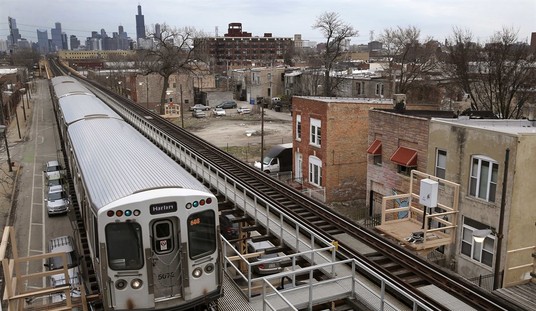Cam Edwards and I had a great discussion on his NRA News program Cam&Co last week titled: “Warehousing Criminals Isn’t Working“. This is a topic we’ve covered many times, both on and off the air. It truly is a fascinating subject and since we’ve received a lot of feedback on the segment, I’d like to dig in a little deeper on the issue.
RESEARCH
The disturbing facts released Wednesday in a study by the U.S. Sentencing Commission of all 25,431 federal offenders released in 2005 make the case for criminal justice reform.
Among the most telling stats? Those on recidivism.
According to the report, “Recidivism refers to a person’s relapse into criminal behavior, often after the person receives sanctions or undergoes intervention for a previous crime”. In other words: repeat offenders.
As Cam asked in our most recent discussion, “Are jails finishing schools for criminals?”
The results of the study, conducted over an 8-year follow up period, speak for themselves:
- 49.3% of federal offenders were rearrested for a new crime or violation of supervision conditions
- 31.7% of the offenders were reconvicted and 24.6% were reincarcerated
- Offenders who were street-released had a rearrest rate of 52.5% while offenders who were released directly to a probationary sentence had a rearrest rate of 35.1%
- The median time of recidivism was 21 months
- Offenders released prior to age 21 have a 67.6% rearrest rate, while those over 60 years of age at the time of release have a 16% rearrest rate
- CRIME COUNTS: Offenders with zero total criminal history points have a recidivism rate of 30.2% while offenders in the highest criminal history category (IV) have a staggering 80.1% recidivism rate
So roughly half of all federal offenders are being rearrested and the most violent criminal offenders only have a 19.9% chance of staying clean once they leave incarceration. How’s that working for us?
RELEVANT
From Florida:
Between 1970 and 2014, Florida’s prison population increased by more than 1,000 percent. And during the past 20 years, state government spending on the state’s criminal justice system increased by $1.1 billion.
To California:
Built to house roughly 80,000 people, California’s prisons were stuffed with twice that many residents, prompting Governor Arnold Schwarzenegger to declare a state of emergency.
With every cell full, prison officials had packed gymnasiums with double and triple bunks. In one such makeshift dormitory, a prisoner was beaten to death. No one on the prison staff noticed for several hours.
California conceded that such conditions violated the Eighth Amendment, but the state fought long and hard with prisoners’ rights lawyers over how to remedy the violations. In Plata, the Supreme Court affirmed a lower federal court order requiring California to reduce prison overcrowding to 137.5 percent of capacity over the next two years. (about 40,000 prisoners, assuming no increase in capacity)
The order didn’t literally require the authorities to award 40,000 inmates a surprise trip home. California was free to decide how to thin its prison rolls: It could transfer state prisoners to local jails, stop sending parolees to prison for minor violations (an anomalous California practice that had been a major contributor to overcrowding), adjust its sentencing laws prospectively, or use some mix of approaches.
Doyle Wayne Scott, a former head of the Texas prison system, pronounced California’s prisons “appalling,” “inhumane” and “unacceptable,” stating that he had “never seen anything like it” in his 35-year career.
…and in-between:
Oklahoma’s state-run prisons are operating at 122 percent capacity, Department of Corrections spokeswoman Terri Watkins said. Drug offenders make up 26 percent of the state prison population. Another 23 percent of inmates are imprisoned for nonviolent crimes.
The implications of releasing criminals early highlights exactly why citizens to carry guns for protection:
More than 100 illegal immigrants caught but released by the Obama administration over the last five years have gone on to be charged with murders after they were set free, according to a new report being released Monday from the Center for Immigration Studies.
In all, some 121 immigrants who were freed by U.S. Immigration and Customs Enforcement between 2010 and 2014 went on to be charged with a total of 135 homicide-related crimes. Another three immigrants were charged with murders in 2015, bringing to 124 the total number of murder suspects the government had, then released.
Two of the immigrants in question had even been convicted of homicide before, but they were released anyway and went on to rack up new murder charges again, the report said. The others had amassed 464 total criminal charges, ranging from drugs to drunken driving, before they landed on the homicide list.
The information was released to Congress by U.S. Immigration and Customs Enforcement, and Jessica Vaughan at the Center for Immigration Studies analyzed the data and said it shows dangerous practices.
“The names of the criminal aliens were redacted by the Judiciary Committee, but the list presumably includes murderers like Apolinar Altamirano, an illegal alien who was arrested by ICE in 2013 following his conviction on local charges involving a burglary and abduction, but who was released on a $10,000 bond and permitted to remain free and elect to have deportation proceedings that would take years to complete.
In January 2015 Altamirano shot and killed 21-year-old Grant Ronnebeck while he was working at a convenience store where Altamirano had come to buy cigarettes,” Ms. Vaughan wrote.
Some leaders leaders talk about fixing it:
White House officials announced Wednesday they’re working with mayors across the country in an effort to reduce crime in major cities, as well as addressing the nation’s stagnant recidivism rate and drug and alcohol treatment efforts.
Mayors from across the nation recently convened in Nashville for the National League of Cities Conference to discuss and find solutions to the most pressing challenges facing local elected officials and youth leaders across the country.
The move comes on the heels of Nashville in 2015 seeing its highest homicide rate since 2009.
“In order to reform our criminal justice system, we must focus on three areas: community, courtroom and cell block,” Abramson said. “This is an issue that has truly brought together both parties of Congress. We remain extremely hopeful that the president will have a bill on his desk he can sign. This is real progress. We wouldn’t be in this situation without help from the National League of Cities and mayors.”
… and some leaders just fix it:
“We [conservatives] need to own this issue if it’s done right,” Cuccinelli said. “The left cannot own it. We have to own it. Somewhere out there is a balance. We should be trying to do it [deal with crime] not just tough, but right.”
Texas, especially, is considered the leader on the issue.
Beginning in 2005, Texas, under the leadership of then Republican Gov. Rick Perry, undertook a number of reforms that are credited with a 12-percent reduction in its incarceration rate since 2009 and its lowest crime rate since 1968.
Texas, taking a more holistic approach to criminal justice, created specialized drug courts, which allow defendants to get treatment as an alternative to prison. It revamped its probation and parole system to swiftly punish violations without automatically sending the offender to prison—to get a violator’s attention without locking him up.
And in 2007, faced with the prospect of spending $2 billion to build and run new prisons to meet demand, a bipartisan group of state legislators instead invested $241 million to expand in-prison and community-based treatment and diversion programs.
“Since that time, we’ve reduced the crime rate to the lowest level since the 1960s, we have fewer prisons, and we’re safer. That’s what Republicans are about. We’re about public safety,” said Jerry Madden, a former Republican member of the Texas legislature who helped design the reforms.
REALITY
Texas’ crime rate has fallen dramatically and recidivism is down; from 28% before the reforms to 22.6%, according to the most recent data. Compare that to the 49.3% recidivism rate we began with from the U.S. Sentencing Commission and that’s a whopping 26.7% difference.
Obviously, Governor Perry’s reforms have been wildly successful, so why aren’t other states following the Lone Star State’s lead?
In a 2015 publication titled “Texas Fact Sheet: What Caused the Crime Decline?“, the Brennen Center for Justice concluded:
Public and political pressure to effectively fight crime and improve public safety has been used to justify incarceration despite the economic and human toll. This report finds that this “one-size fits all” use of imprisonment to punish crime has passed the point of diminishing returns. In essence, adding more and more people to prison is no longer producing the expected crime control benefits.
As state budgets grow tighter, government should invest in policies that achieve their intended goals. Prioritizing modern, evidence-based criminal justice policies with record of success over costly and ineffective over-incarceration seems to be the best way forward in Texas and nationwide.
Pay attention, Governors: Rick Perry cracked the code on criminal justice reform.
And it’s sitting in plain sight for all states to benefit from.








Join the conversation as a VIP Member